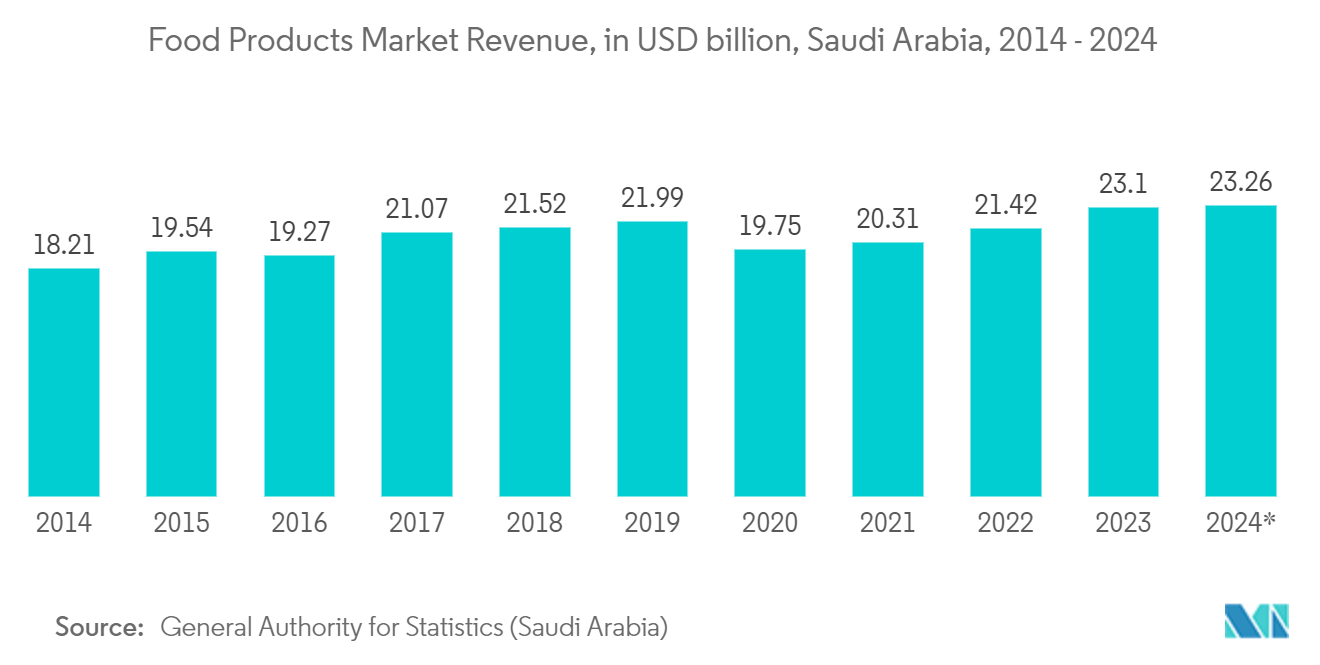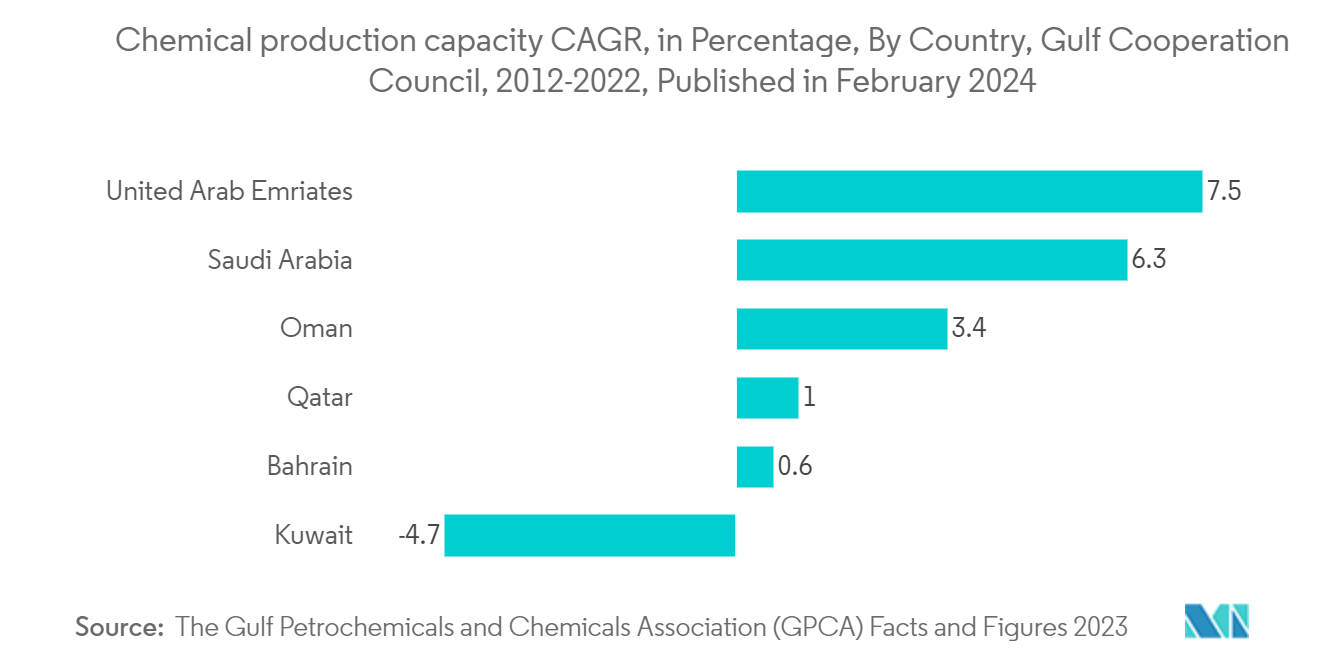Market Trends of Saudi Arabia Rigid Plastic Packaging Industry
Increasing Demand Across End-use Industry Segments to Drive the Market
- Demand for rigid plastic packaging solutions is surging, primarily fueled by end-use industries such as food, retail, consumer goods, cosmetics, and pharmaceuticals. This increase is largely linked to rapid urbanization, which often leads to heightened consumer spending, a surge in the production of consumer goods, a notable expatriate population, and shifting dietary preferences.
- As organized retail formats like hypermarkets, supermarkets, and e-commerce gain traction, the country's processed and packaged food market is witnessing significant growth.
- In a bid to diversify from its oil and gas dependence, the government is bolstering real estate projects and liberalizing the retail market. Such moves are anticipated to unlock new opportunities for rigid plastic packaging, driving demand across multiple industries.
- In the third week of May 2024, point-of-sale (POS) transactions in Saudi Arabia hit SAR 11.65 billion (USD 3.1 billion). The foodservice industry is also bolstering the Saudi Arabian rigid plastic packaging market. As reported by Redseer in December 2023, the Saudi Arabian foodservices market achieved a milestone of USD 31 billion in 2023, marking a notable 35% Y-o-Y growth. Quick-service restaurants are increasingly reliant on rigid plastic trays and foodservice boxes.
- Innovations in healthcare, pharmaceuticals, and cosmetics are set to sustain the rising demand for plastic packaging. The growing appetite for skincare and healthcare products, especially those with plastic packaging, is a primary market driver.

Polyethylene Terephthalate (PET) Holds a Major Market Share
- Polyethylene terephthalate (PET), an aliphatic polyester, is semi-crystalline in its stable form, widely utilized in everyday items, and boasts easy recyclability. Predominantly, it is employed in food and beverage packaging, among other uses. PET exhibits resistance to impacts, moisture, and solvents. Originating from polyethylene (PE), PET is part of the polyester family, catering to applications requiring lightweight, rigid, and flexible packaging.
- Due to its robust barrier properties and adaptability, PET stands out as a favored plastic for thermoforming. Before cooling, PET can be molded into diverse shapes, enhancing shelf life. This molding capability, combined with its resistance to tampering and external factors, renders PET ideal for sensitive uses, including food containers, beverage bottles, and medical device packaging.
- In the Saudi Arabian soft drinks market, consumer purchasing decisions are heavily swayed by convenience. The market's growth is propelled by ready-to-drink (RTD) formats, on-the-go packaging, and widespread availability through retail channels like supermarkets, convenience stores, and online platforms.
- In May 2024, Arab News highlighted a significant evolution in beverage choices within Saudi Arabia. Premium local beverages are being increasingly preferred over conventional sodas. This trend has ignited a renaissance in the Saudi Arabian beverages industry, emphasizing innovation and quality. Al-Jameel International, a Saudi Arabian enterprise, astutely tapped into this shift, launching 'Kinza,' a carbonated drink, which quickly resonated with the local audience back in 2022.
- The Saudi Arabian beauty market, especially luxury and fashion products, is rapidly ascending, marking it as one of the GCC's swiftest-growing market segments. This surge is attributed to rising disposable incomes and increased consumer expenditure. The industry is also undergoing a digital metamorphosis, with e-commerce and social media amplifying the reach of beauty products. A notable trend is the growing preference for halal beauty products, reflecting the heightened societal engagement of Muslim women. Recognizing this global fascination with beauty, both businesses and consumers have responded, leading to a pronounced demand for rigid plastic packaging, including jars, containers, and cosmetic bottles.
- As per GPCA, the GCC's chemical production saw a 1.9% uptick, reaching 159 million tons from 2022 to 2023. This growth can be largely attributed to the expansion of polyethylene and polypropylene plants across the Gulf. With increased availability from these raw material plants, the market for PET bottles in Saudi Arabia is poised for growth.
- Insights from the Saudi Food Show underscore the promising future of the Saudi Arabian food and beverage industry. Projected to grow at an annual rate of 3.44%, the industry is set to reach USD 27.83 billion by 2029. This trajectory solidifies Saudi Arabia's position as a central hub for food and beverages, drawing both domestic and international stakeholders. The rising demand, particularly for rigid plastic bottles like PET, opens up numerous opportunities.


